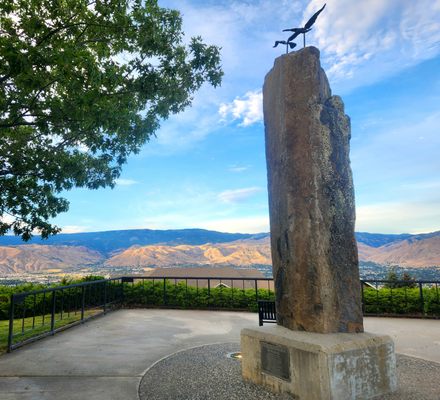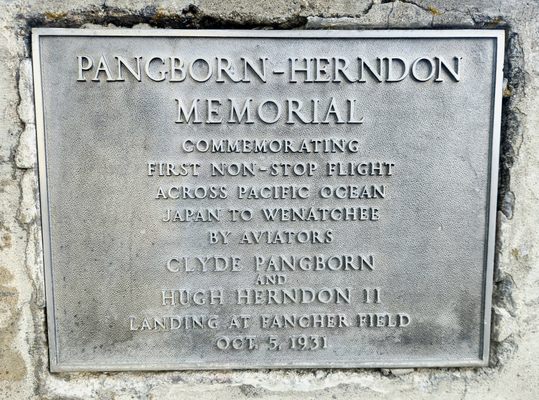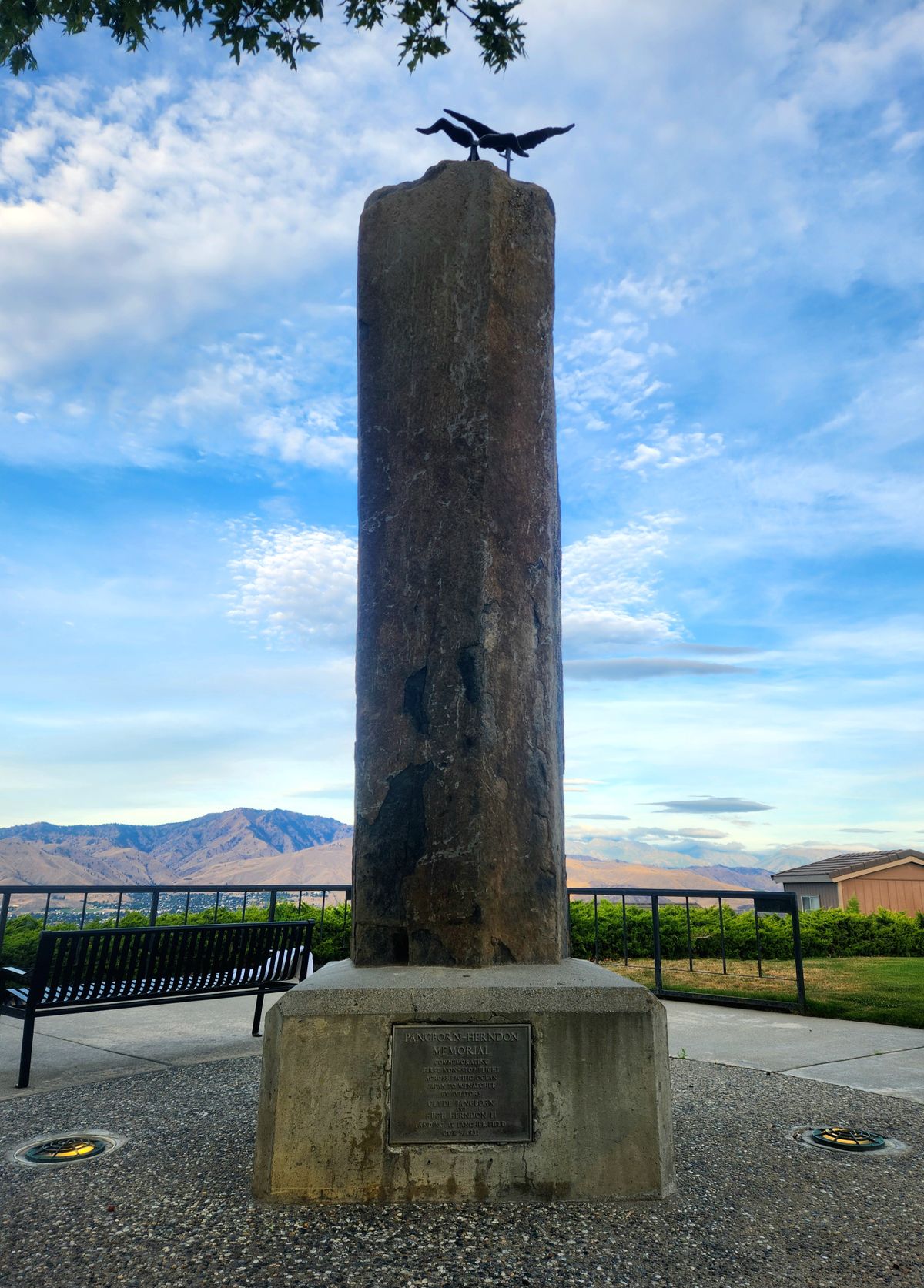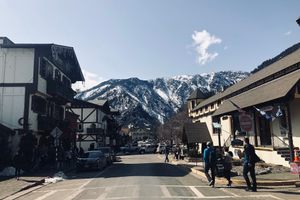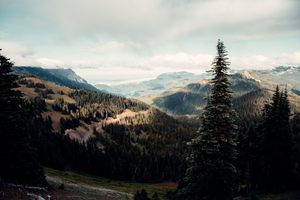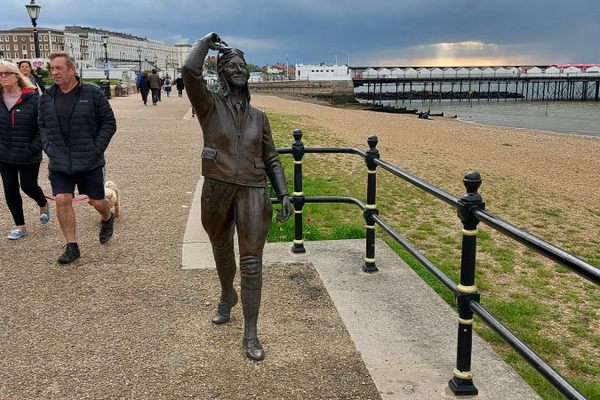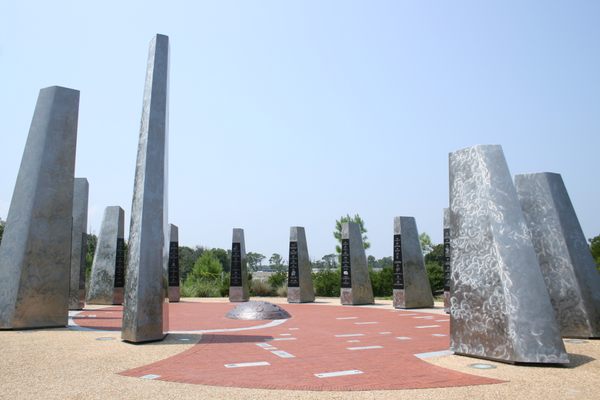About
On October 5, 1931, Clyde Pangborn and his co-pilot Hugh Herndon made aviation history when they skidded their plane to a stop on a hill overlooking the town of Wenatchee, Washington. They had taken off 41 hours and 34 minutes earlier and flown 5,558 miles from Japan, completing the first nonstop flight across the Pacific Ocean.
Pangborn was a fighter pilot during World War I and after the war continued flying as a barnstormer and performing in aerial exhibitions. During this period he met Hugh Herndon, the wealthy scion of an oil fortune who had an interest in aviation. With Pangborn's skill and Herndon's money, the two set out to make names for themselves.
Pangborn and Herndon purchased a plane they named the Miss Veedol and in July 1931 they took off from New York, aiming to break the record for fastest circumnavigation of the globe. After a hard landing in Siberia required repairs that put them behind schedule, they decided to abandon their quest for that record and instead make an attempt for the first nonstop transpacific flight.
The pair flew to Japan and made their preparations. The plane had to be modified to be significantly lighter and additional fuel tanks had to be fastened. They also modified the bulky landing gear so that it could be jettisoned into the ocean after take-off, to reduce drag and further lighten the plane. With their thoughts on historic posterity, they took pictures of their work and their time in Japan and, unwittingly, of some Japanese naval bases. Japanese authorities arrested Pangborn and Herndon under suspicion of being spies and for not having proper documentation for their prolonged stay in the country. They were eventually released with a fine after explaining themselves.
Despite their release, they would have just one attempt to make their flight. If weather or mechanical failure forced them to turn around and reenter Japan, they would be returned to prison and the plane would be confiscated. To further complicate matters, the maps and charts they prepared for their flight were stolen by a Japanese nationalist paramilitary group who hoped that a Japanese pilot would be the first to complete the historic flight.
A small crowd gathered on October 4, 1931, in Sabishiro Beach to watch the Miss Veedol as it struggled, but successfully managed to take off under the weight of the additional fuel it was carrying to make the historic trip. Three hours into the flight, they ejected the landing gear, but not all of it came off. Pangborn had to climb out onto the wings and reach down to manually detach the remaining pieces.
After nearly two days of flying, they approached North America. They had planned on landing in Seattle, but poor weather forced them to change plans. Clouds prevented them from landing in Vancouver, Boise, and Spokane, but the airstrip east of Wenatchee was clear. Without landing gear, they came down for a rough landing, sliding to a stop on the belly of the plane.
For their successful flight into aviation history, Pangborn and Herndon were awarded $25,000 by the Japanese newspaper Asahi Shimbun. They were denied a $100,000 prize by the Japanese Imperial Aeronautics Association (it stipulated it was only for Japanese aviators) and a $28,000 prize put up by a group of Seattle businessmen, whose rules stipulated that the first transpacific flight should be from Seattle to Japan, not the other way around.
The Miss Veedol was driven to Seattle. where it underwent repairs. Afterward Pangborn and Herndon completed their circumnavigation of the globe by flying it back to New York. The plane was sold to another group of aviators and it disappeared in 1932 on a flight from New York to Rome, Italy, and was never seen again. Hugh Herndon became a commercial pilot and executive. Clyde Pangborn continued seeking aviation records and when World War II broke out he returned to military service, flying in that war as well. When Pangborn died he was buried in Arlington National Cemetery and he is honored in the National Aviation Hall of Fame. In 1969, a monument was erected at the site where the historic flight landed, which is today in the town of East Wenatchee.
Related Tags
Know Before You Go
The site is free to visit and currently sits on the edge of a suburban neighborhood. There is ample parking at the monument.
Community Contributors
Added By
Published
October 24, 2024
